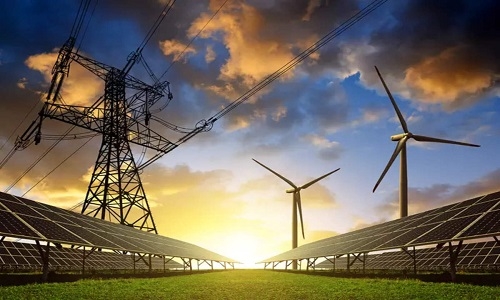Climate change may impact Mah’s renewable energy potential: Study
| Date :17-Aug-2022 |

Staff Reporter
A latest study by Indian Institute of Tropical Meteorology (IITM), Pune, hinted at a possibility of impact on Maharashtra’s renewable energy potential due to climate change.
The study titled ‘Analysis of future wind and solar potential over India using climate models’ has been carried out by IITM Pune under the Ministry of Earth Sciences as well as Centre For Prototype Climate Modelling, New York University, Abu Dhabi, UAE.
As per the study, Maharashtra’s push for renewable energy - amongst many other areas and aspects of our everyday lives - climate change is set to impact India’s solar and wind energy potential over the next five decades.
Maharashtra currently ranks among the top states in the country in terms of installed renewable energy capacity (10.78 GW). Maharashtra, with wind power capacity of 5.01 GW and solar power capacity of 2.75 GW, contributing the most, that includes being second in the race on decentralised renewable energy (DRE). As of June 30, renewable energy contributes 24.36% to Maharashtra’s power mix, stated the study.
Maharashtra is likely to launch an ambitious initiative to build new solar plants in all its districts to produce 12 GW of renewable energy in the next six years with the goal of increasing the amount of available power and lowering power purchase costs in future. Meanwhile, the State also accounts for 15% of the country’s wind energy potential.
“Our industry must adapt to the changing climate, and our technologies must keep pace. Such predictions should not be taken as facts, but as possibilities. The efficiency of renewable energy may be impacted by climate change in Maharashtra and the neighboring areas. The study emphasizes the importance of being prepared for scenarios of this
kind and addressing it,” said Parthasarathi Mukhopadhyay, Researcher of the study.
According to Maharashtra’s Unconventional Energy Generation Policy, which was unveiled in January 2021, the State intends to continue on its leadership track and generate 40% of its electricity from renewable sources, by 2030.
The State experiences 250 to 300 days of bright sunshine annually. Thus, on an average, it witnesses up to 4 to 6 kWh per square metre. “Our study of projections in terms of impact on renewably powered sources presents a perfect example of challenges and opportunities in Maharashtra. The projections of solar energy potential for the future over western and central India, including Maharashtra as well as its adjoining states like Madhya Pradesh, Chhattisgarh and others, shows a strong negative trend in the immediate future and thus, builds the need therefore to prepare better,” said Mukhopadhyay.
Maharashtra has a reasonable wind potential of roughly 45 GW and 100 GW at 100m and 120m, respectively. Maharashtra is one of the seven windy states in India. The main markets for wind-based energy continue to be Maharashtra, Tamil Nadu, Gujarat and Karnataka. The four states account for roughly 72% of all additions.
Ministry of New and Renewable Energy also recently replied a question in Rajya Sabha regarding the study conducted by IITM Pune, in which, the Ministry said that, changing climate patterns were likely to reduce the generation of solar power in the country and also, affect the major wind power plants in certain regions.
To overcome this challenge, the Ministry is funding research and development under the Renewable Energy Research and Technology Development Programme in a variety of areas, including enhancing solar cell efficiency, resource assessment, precise forecasting techniques, raising hub heights for wind turbines and making larger rotor blades.